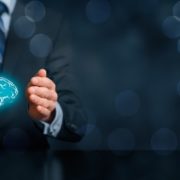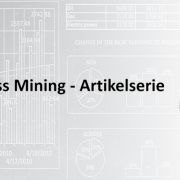New Era of Data Science in Today’s World
In today’s digital world, most organizations are flooded with data, both structured and unstructured. Data is a commodity now, and organizations should know how to monetize that data and derive a profit from the deluge. And valuing data is one of the best ways enterprises can become successful in distinguishing themselves in the marketplace.
Data is the new oil
Indeed, data itself has become a commodity, and the mere possession of abundant amounts of data is not enough. But the ability to monetize data effectively (and not merely hoard it) can undoubtedly be a source of competitive advantage in the digital economy. However, we need to refine this data. And refinement of this “new oil” will take a reasonable amount of time. In my opinion, we are still not there. As a result, “data refinement” remains a key factor for successful advanced analytics.
If we talk about the level of activity in data and analytics space in the last two years, most advanced analytics evolved around three categories:
- Descriptive, or what has happened
- Predictive, or what could happen, and
- Prescriptive, or what we should do.
Descriptive analytics has been the core analytics for many years. In the past, we could only describe what has happened to historical data (such as that found in a data warehouse), with dashboard reporting, using traditional analytics. But with the advent of advanced analytics, machine learning (ML), and deep learning and artificial intelligence (AI), our focus has changed to real-time analytics. In the last two years, much work has been done in predictive analytics, and as we move forward into our analytics journey, data-centric organizations will now focus on prescriptive analytics. The use of prescriptive analytics, along with predictive analytics, is very important for any organization to be successful in the future.
Current and recent trends in data and analytics
The analytics trends revolve around AI and ML. The Analytics-as-a-Service model is an essential model for any smart, data-driven organization. We can make an impact on society and try to make a better place to live with the use of advanced analytics. At NTT DATA, we strive to solve these problems to improve the quality, safety and advancement of humanity. From a business perspective, we use data analytics and predictive modeling to help companies increase their sales and revenue.
Let me give you some examples. We have been involved with several technology partners in a project for the Smart City. This project involved the use of predictive analytics for the validation of critical alerts to help reduce the time and amount of data required to be processed. It used Internet of Things (IoT) devices, high-definition video cameras, and sound sensors, as well as video and sound data captured from specific locations. Eventually, the solution also integrated with available data from data sources such as crime, weather and social media. The overall objective of the Smart City project was to use and apply advanced analytics with cognitive computing to facilitate safety decision-making, and for a responder to respond earlier based on real-time data.
Another example is the Smart ICU System developed by NTT DATA for predictive detection of threats for seriously ill patients in an ICU, based on the data. This data was consolidated from various medical devices in the ICU into one platform. From that data, we developed a model that predicts the risk of complications that might occur within the next couple of hours or so of a medical event. We have also used advanced analytics provided by weather data forecasting and used predictive models to predict natural disasters.
Data and analytics strategy
A strategy is an essential aspect of any data-driven organization. It should cover data strategy for AI, ML, statistical modeling and other data science disciplines, such as predictive and prescriptive analytics. In general, advanced analytics is more predictive and actionable than retrospective. Smart organizations see positive results when they place a strategy for data and analytics in the hands of employees who are well-positioned to make decisions, such as those who interact with customers, oversee product development, or run production processes. With data-based insight and clear decision rules, employees can deliver more meaningful services, better assess and address customer demands, and optimize production.
Smart organizations must take time to clean and update their underlying modern data architecture — along with their data governance process, for a cleaner data and analytics strategy. A modern data architecture, combined with a good governance process, can leverage AI and ML to help organizations stay ahead of their competitors.
Data analytics innovation
Machine and Deep Learning, along with AI, are all very popular, but I would like to reiterate that advanced technologies like AI and machine learning will continue to transform data analytics. The next innovation could be the use of automated analytics, which machine learning tools can use to identify hidden patterns in data. For example, customer retention issues, customer default on loans, or predicting customers who are prone to auto accidents. Also, predictive analytics and prescriptive analytics are going to be the key for any future innovations in AI and ML.
We must make targeted investments in traditional business innovation tools, along with emerging data analytics tools to derive benefits from data-driven business initiatives. We need to invest in cloud and underlying IT infrastructure to support these analytics and business initiatives. Most importantly, we also need to invest in people — cross training skilled resources and empowering the people who work closely with clients to make the right decisions for analytics.










Thankyou for sharing such a nice blog. It is one of the major features of every firm as it helps business leaders to make informed decisions based on numbers, trends, and facts. It also helps organizations to identify their client in a better way.